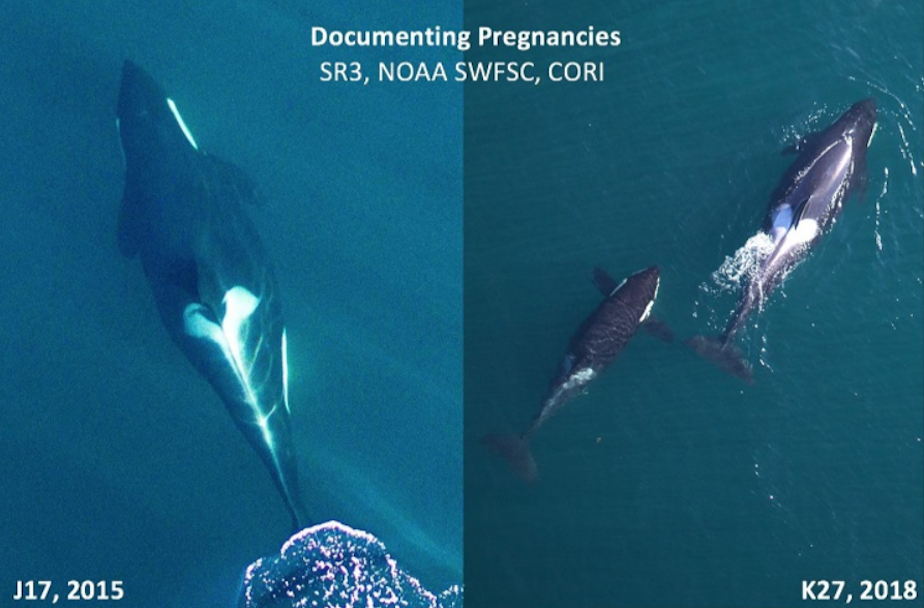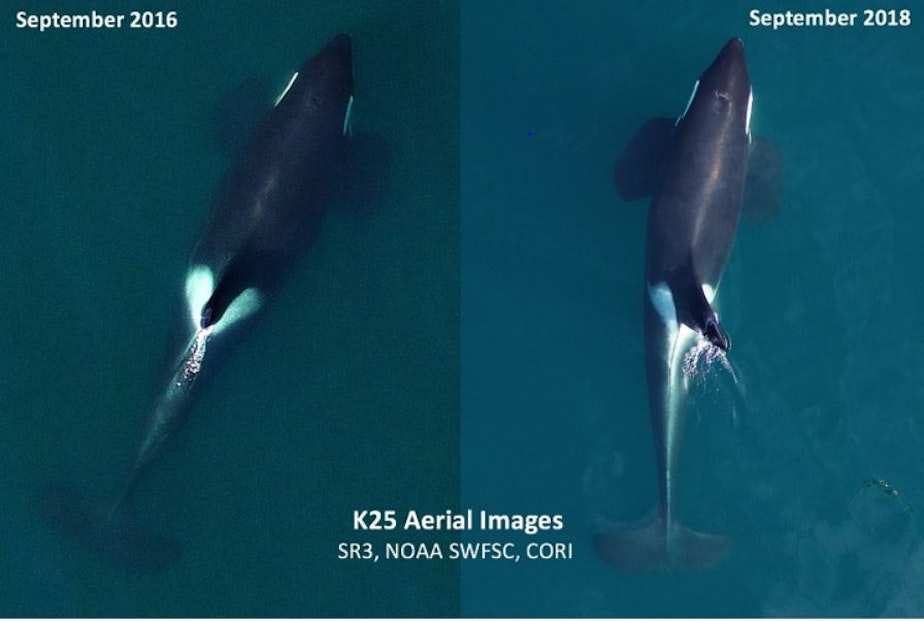Another Puget Sound orca is in bad shape. Three others are pregnant

Drone photography shows a 27-year-old male to be noticeably thinner than in years past.
The lean profile of the whale known as K25 is yet another sign of trouble for the region’s endangered orcas.
On Sunday, the Globe and Mail reported “dismal” returns of chinook salmon in British Columbia’s Fraser River, one of the most important food sources for the southern resident killer whales.
Since last November, three members of the long-endangered population have died, most recently an emaciated young female known as J50. Her death, despite intensive efforts to find and medicate her, dropped the fish-eating orcas’ numbers to 74, the lowest in 30 years.
“While the decline in K25’s body condition is not as severe as we saw with J50 this summer, it is a warning signal,” Lynne Barre, of the National Oceanic and Atmospheric Administration, said in a press release.

At 27 years old, K25 is nearing the average 30-year life span for a male orca.
NOAA officials said they are not planning to intervene to provide veterinary care at this time.
Aerial photography has also revealed bulging bellies on at least one orca in each of J, K and L pods: females well into their 18-month pregnancies.
Officials and activists welcomed that news.
Still, most local orca pregnancies in the past decade have ended in miscarriage, probably due to malnutrition. One of the currently pregnant whales, K27 (K25’s sister), had miscarried in 2016 and was photographed carrying the fetus to the surface on her nose.
"The three pregnancies are something to celebrate, but finding K25 so thin is a reminder that we have a lot more work ahead of us," wildlife veterinarian Joe Gaydos with the SeaDoc Society on Orcas Island said in a text message to KUOW. "Restoring chinook, reducing noise and cleaning up toxins."
On Tuesday, Gov. Jay Inslee’s killer whale task force released 45 draft recommendations for such ways to boost births and reduce deaths among the remaining orcas. The proposals, aimed at increasing the southern residents’ population by 10 whales over the next 10 years, are open for public comment until Oct. 7.
The task force’s next big meeting is scheduled for Oct. 17-18 in Tacoma. Recommendations are to be finalized in November for elected officials to adopt, adapt or ignore.




